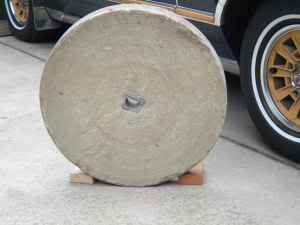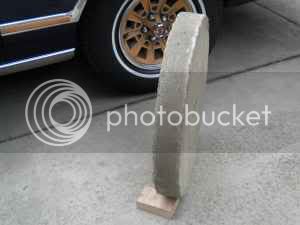Brasilikilt
45 Cal.
- Joined
- Dec 13, 2005
- Messages
- 560
- Reaction score
- 1
Hello again!
Not quite sure if this is the right sub-forum, but suppose it's close enough.
I have been looking around on the net for one of these old grind stones to use as a cooler, more controlled method to do finish work and sharpen my forged blades and other edged tools.
I know that more that a few of you have experience using these old grindstones, so I would really appreciate any suggestions or advice.
Other than the obvious visible defects such as a stone which is not trued-up/out-of-round, has sizable chips along the edge or cracks, what should I look for?
I understand that the majority of these stones are made from sandstone which I assume is the the lighter colored stuff.
There is one for sale locally which has a darker grayish appearance. Would this darker stone possibly be superior to the more common sandstone?
Any information or suggestions are much appreciated
Thank you
Iain
Not quite sure if this is the right sub-forum, but suppose it's close enough.
I have been looking around on the net for one of these old grind stones to use as a cooler, more controlled method to do finish work and sharpen my forged blades and other edged tools.
I know that more that a few of you have experience using these old grindstones, so I would really appreciate any suggestions or advice.
Other than the obvious visible defects such as a stone which is not trued-up/out-of-round, has sizable chips along the edge or cracks, what should I look for?
I understand that the majority of these stones are made from sandstone which I assume is the the lighter colored stuff.
There is one for sale locally which has a darker grayish appearance. Would this darker stone possibly be superior to the more common sandstone?
Any information or suggestions are much appreciated
Thank you
Iain






